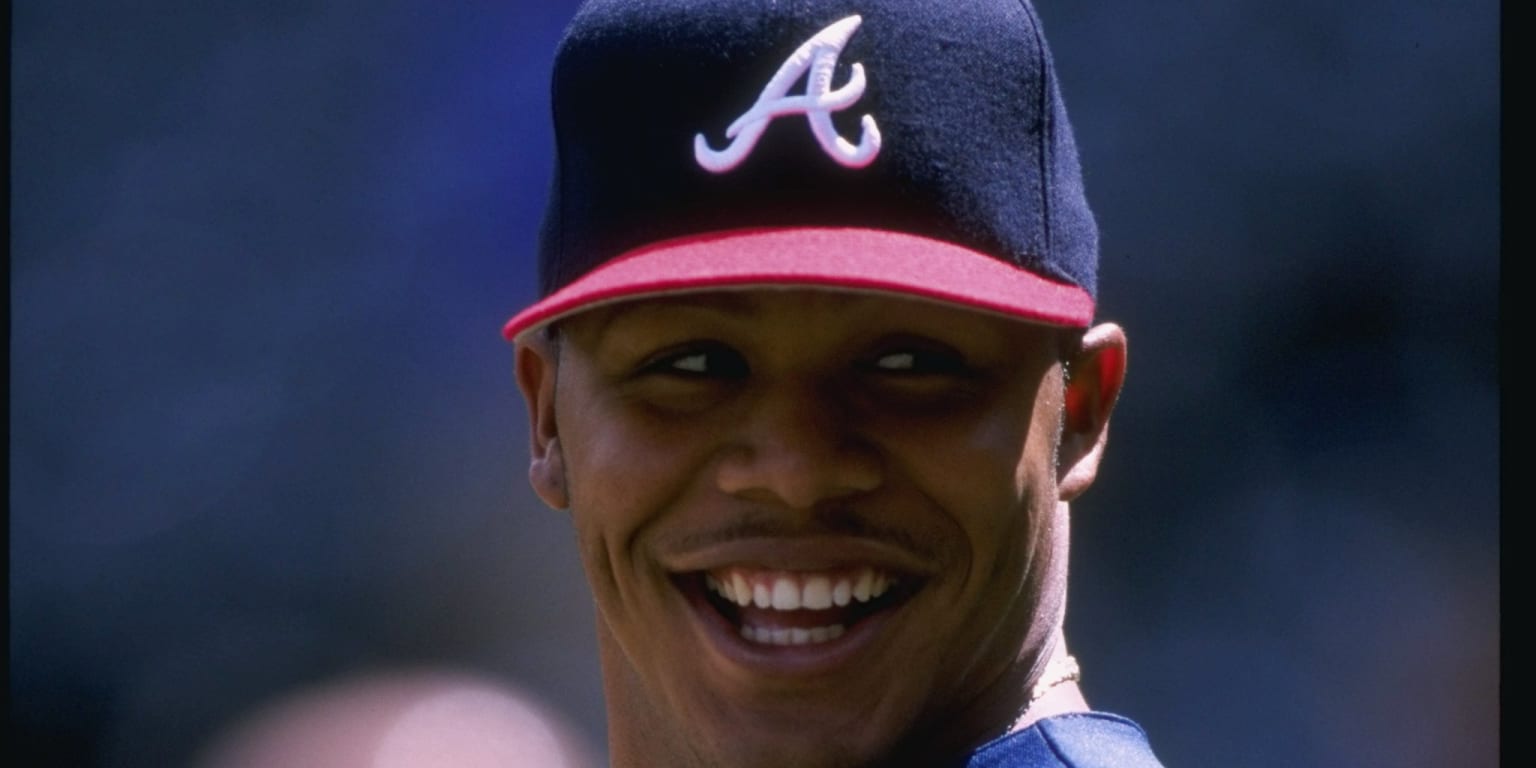
Andruw Jones is in his sixth year on the Hall of Fame ballot. Here’s his case for election into Cooperstown.
Jones’ defensive prowess in center field and power at the plate during his peak helped put him in the conversation with some of the best we’ve seen at the position. His defense led to 10 Gold Glove Awards. He crushed 434 career home runs, including an MLB-leading 51 in 2005. From 1998-2006, he hit 319 of those homers while slugging .513. His years after playing in Atlanta, from 2008-12 with the Dodgers, Rangers, White Sox and Yankees, represented a steep drop-off, which may be why his candidacy is still underway. He slugged .424 and hit .210, with 66 homers in 435 games over those later years.
After receiving 7.3% of the vote from the Baseball Writers’ Association of America in 2018 and 7.5% in ’19, Jones’ numbers have steadily risen — to 19.4% in ’20, 33.9% in ’21 and 41.4% in ’22.
Here are four reasons why Jones would be a deserving Hall of Famer:
1. A trophy case full of Gold Gloves
As mentioned above, Jones won 10 Gold Gloves in his career. Here’s the full list of outfielders to win more: Roberto Clemente and Willie Mays. That’s it — two first-ballot Hall of Famers.
Jones is one of four outfielders to win exactly 10 Gold Gloves, with Ken Griffey Jr., Al Kaline and Ichiro Suzuki. That’s two more first-ballot Hall of Famers and another who seems sure to be the same when he reaches the ballot, in Suzuki. Sure, a handful of trophies alone do not book a ticket to Cooperstown, but accumulating more of them than all but a select group of center fielders provides evidence as to how dominant Jones’ defense was.
Let’s go a step further. Overall, there have been 15 non-pitchers to win at least 10 Gold Gloves. Only four of them also hit at least 400 home runs: Mays, Griffey, Mike Schmidt and Jones. That’s right, another list comprised entirely of first-ballot Hall of Famers, plus Jones.
Put simply, every other outfielder with Jones’ level of defensive prowess, and every defender on his level to also slug as much as he did, is in the Hall of Fame.
2. Plus, other quantifiable defensive ability
Gold Gloves are a great way to recognize strong defenders, but they are voted on by individuals, in part — they’re awards. We can use actual statistics to show Jones’ dominance in center, too.
He accumulated 24.4 defensive WAR, per Baseball Reference, in his career. That’s the most of any outfielder in MLB history, by 5.6.
During his full seasons in Atlanta, from 1997-2007, he had 26.7 defensive WAR, 10.2 more than any other defender at any position in that span (Ivan Rodriguez). That difference between first and second on the list was the same as the difference between Nos. 2 and 56 on the list. That’s a hefty lead, and again — among all defenders.
We don’t have defensive runs saved or outs above average to span Jones’ career, but Baseball Reference has a stat called total zone runs, which is essentially a precursor to the idea of DRS. Jones amassed 230 total zone runs, the most by any player as a center fielder since the stat’s data begins (1953), ahead of Mays’ 176.
There’s no question Jones is among the greatest defensive center fielders of all time.
3. Adding plenty of value during his peak
As the Gold Gloves plus 400 homers stat shows, Jones wasn’t just about that defense. Here’s another piece of evidence toward that point. During that aforementioned span from 1998 to 2006, Jones totaled 54.5 WAR. That ranked third among position players, behind only Alex Rodriguez (70.6) and Barry Bonds (67.6).
Rodriguez won two MVP Awards in that span; Bonds won four, consecutively. Yes, those two were in a class of their own in this stat during that span, but Jones was a solid third — again, among all position players.
And, yes, defense is part of WAR — a key component to how he helped his team. But he didn’t rack it up solely by manning his position. His 319 homers ranked eighth in the Majors in that span and his 940 RBIs were ninth.
4. Favorable rankings at his position
Again, it isn’t solely defensively where Jones ranks well among fellow center fielders. His peak seven-year WAR — the sum of his seven highest totals, not necessarily consecutively — was 46.4. That’s ahead of the average of the 19 Hall of Fame center fielders, which is 44.7. In fact, only eight center fielders have had a higher peak seven-year WAR: Mays, Ty Cobb, Mike Trout, Mickey Mantle, Tris Speaker, Griffey, Joe DiMaggio and Duke Snider. That’s seven Hall of Famers and another who will be there one day, in Trout.
This makes sense based off Jones’ 1998-2006 WAR rank, noted above, too. His peak, whether we look at seven years or nine, ranks favorably — both among his peers at the time and among others to play his position throughout history.
Therein lies the question with Jones and his candidacy. There’s plenty of evidence supporting his being a Hall of Famer, numbers-wise, at his peak. Will that lead to his being elected eventually?
This news is republished from another source. You can check the original article here


